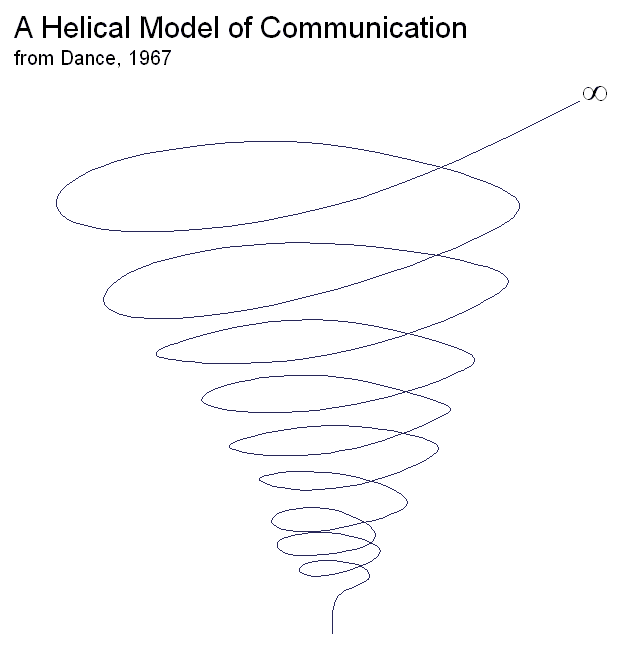1- Berlo's Model of Communication (usually called Berlo's S-M-C-R):
S = Source , M = Message , C = Channel , R = Reciever
Berlo's model is an adaptation of the Shannon-Weaver model. However, it does include many additions. First, the model recognizes that the sender/reciever isn't always human hence the word "source". Second, It also recognizes that the messages are not always verbal. Third, it recognizes the different channels a message can go through.
2- Dance's Helical Spiral Model:
This communication model is perhaps the most fun to look at! This model illustrates communication as a process. What we communicate in the past is most likely going to affect what we communicate in the future. It shows that the communication process moves forward and is contineous.
3- Becker's Mosiac Model:
This is one of the more complex communication models. It shows how complex communication can be. The whole cube is a representation of the communication environment. The little mosiac tiles are the messages. Basically, the model is telling us that a message can have various elements that relate to different things or occurances. It also shows the message's exposure which can be superficial or in-depth.
There many other communication models. You can visit this website to learn more.



No comments:
Post a Comment